COURSE
THE CITY AS ARCHIVE
University of Basel, Urban Studies, MA Critical Urbanisms, Fall 2023
Kenny Cupers
FANON TODAY
This essay is an interpretation of the two essays below.
Colonial Archives and the Arts of Governance by Ann Laura Stoler
Fanon and space: colonization, urbanization, and liberation from the colonial to the global city by Stefan Kipfer
MA Critical Urbanism-University of Basel
MA Critical Urbanisms - Instagram
CRITICAL ESSAY
INTERPRETATION
An archive is a subject in itself, not just a resource. It refers to the production of knowledge rather than the knowledge itself. The classifications contained in the archive are directly linked to colonial policies and the imperial state. All this content is directly linked to space and time; in this sense, Frantz Fanon's works are important resources on the spatial and urban canon of colonial archives, and spatial dimensions, relationships, and analyses form the basis of the archive over a certain period of time. Space and time always contain metaphors that are important for the historical transformation of colonialism; spatial concerns trigger temporal concerns.
Colonialism is not a past but an active structure that informs the present; it also indicates spatial organization, alienation, and control. In this sense, the archive is the essence of colonial policy with the information it provides about all this spatial organization and relations in the colonial city in the context of socio-spatial dilemmas of racism. Fanon focuses on this issue, and in his works, space has primary importance with its physical and psychological dimensions.
Understanding the neo-imperial world today, realizing all spatial controls at individual and social scales, and reflecting the colonization of today leads us to reinterpret many urban understandings. While colonial documents are, on the one hand, an emotional source that reveals fears, what is seen and heard, on the other hand, points to the institutions and geo-political structures that these documents serve. This is essential to understanding today's city.
Fanon points out the sharp boundaries that occur spatially in the colonial city, a kind of division; this is an imposition created by colonialism. In a postcolonial reading, establishing the connection between archive and space, analyzing these relationships on the scale of urban space, and realizing the destructiveness in the spatial architecture of colonialism will inevitably lead us to new contradictions.
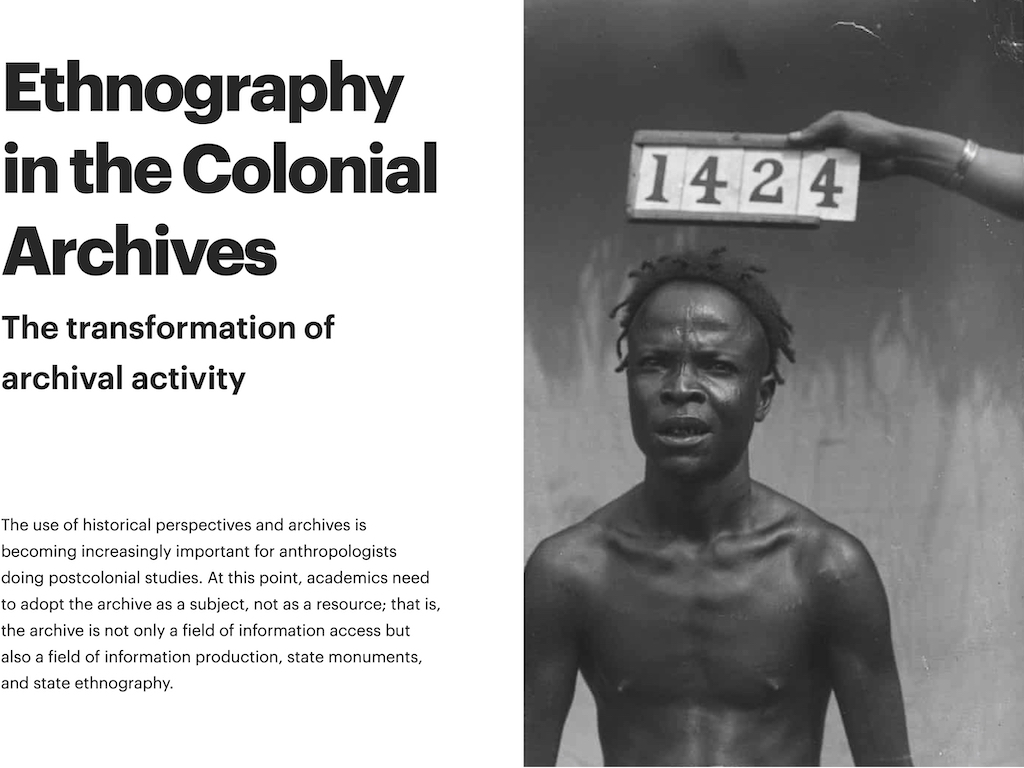
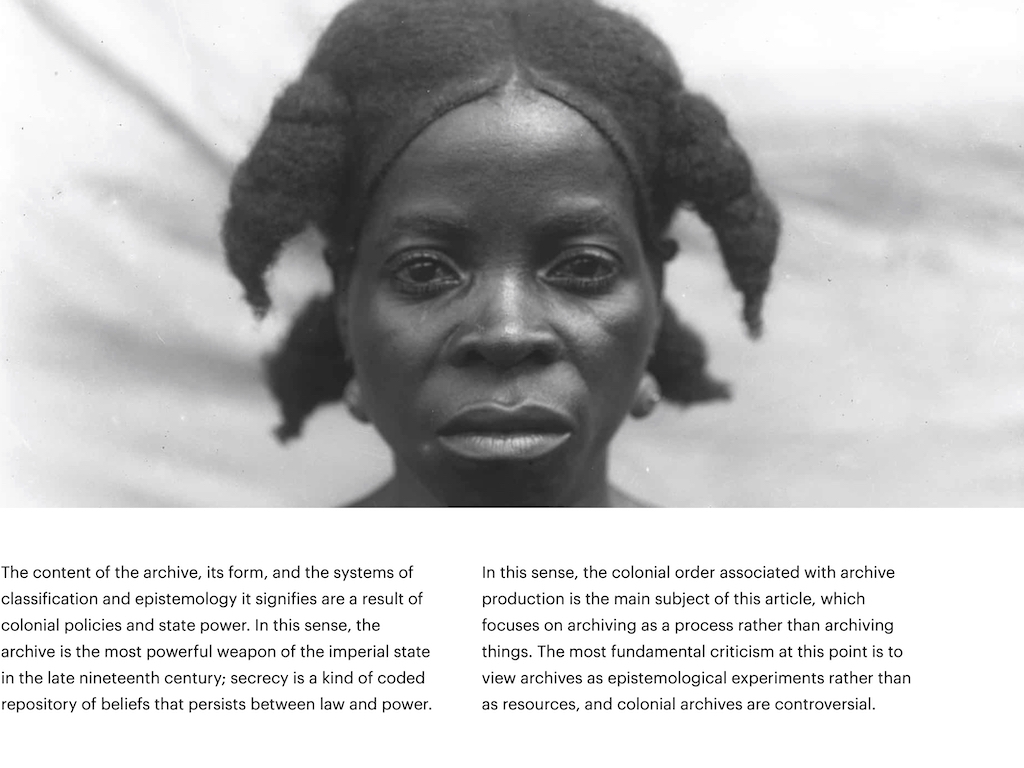
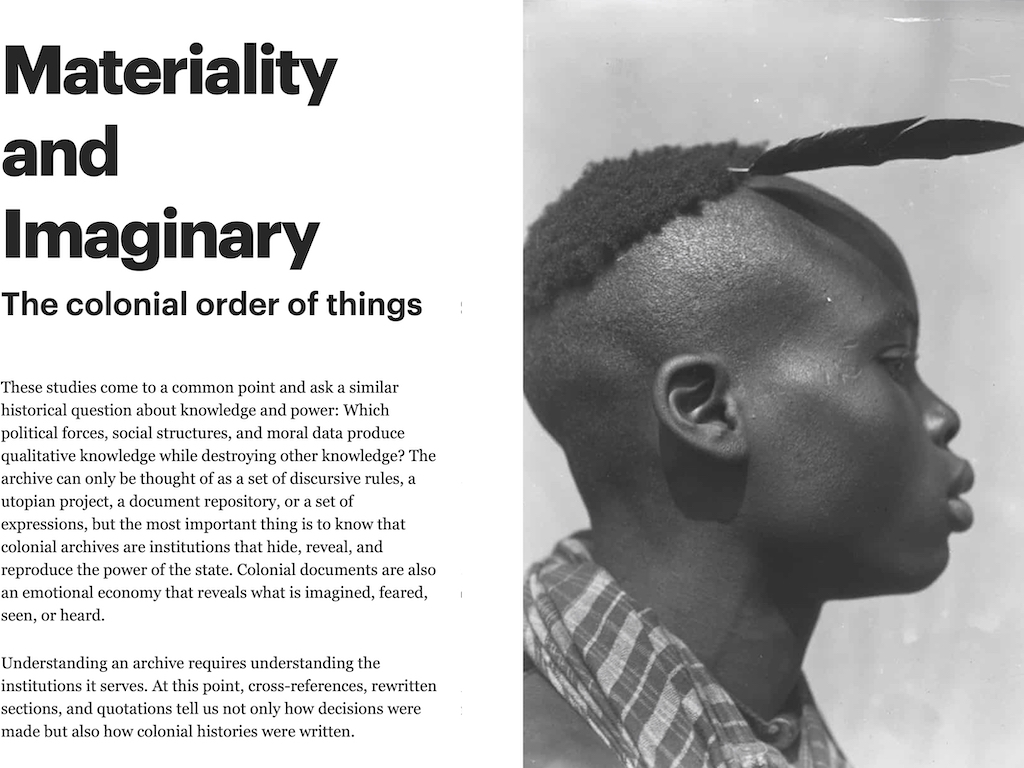


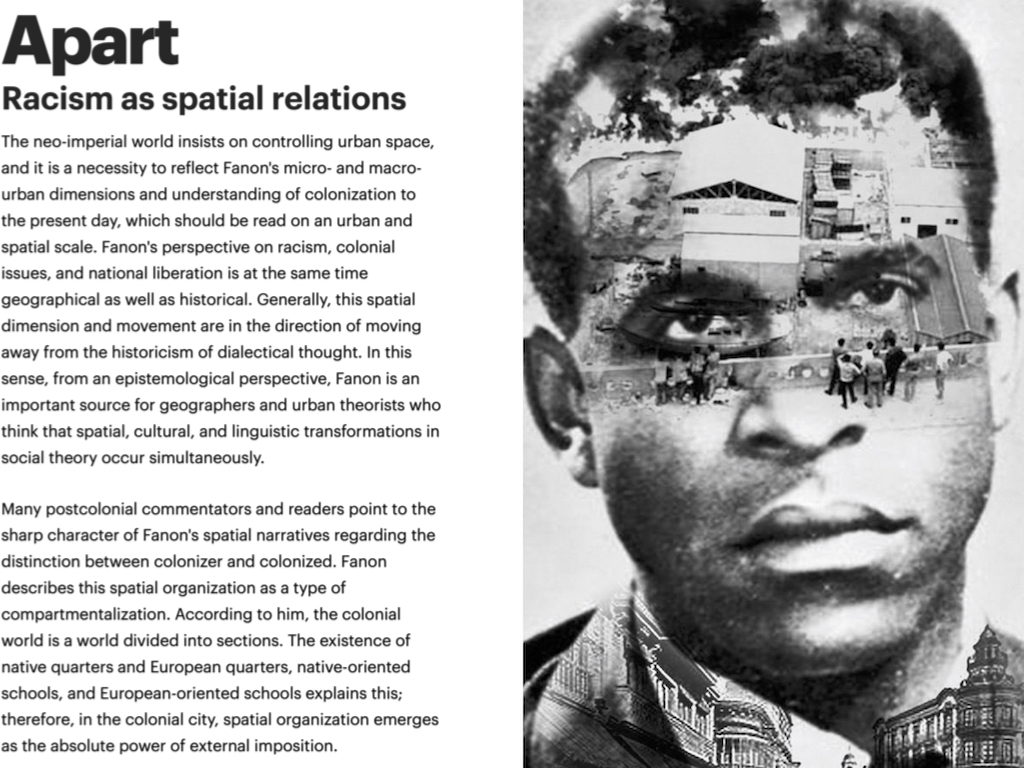
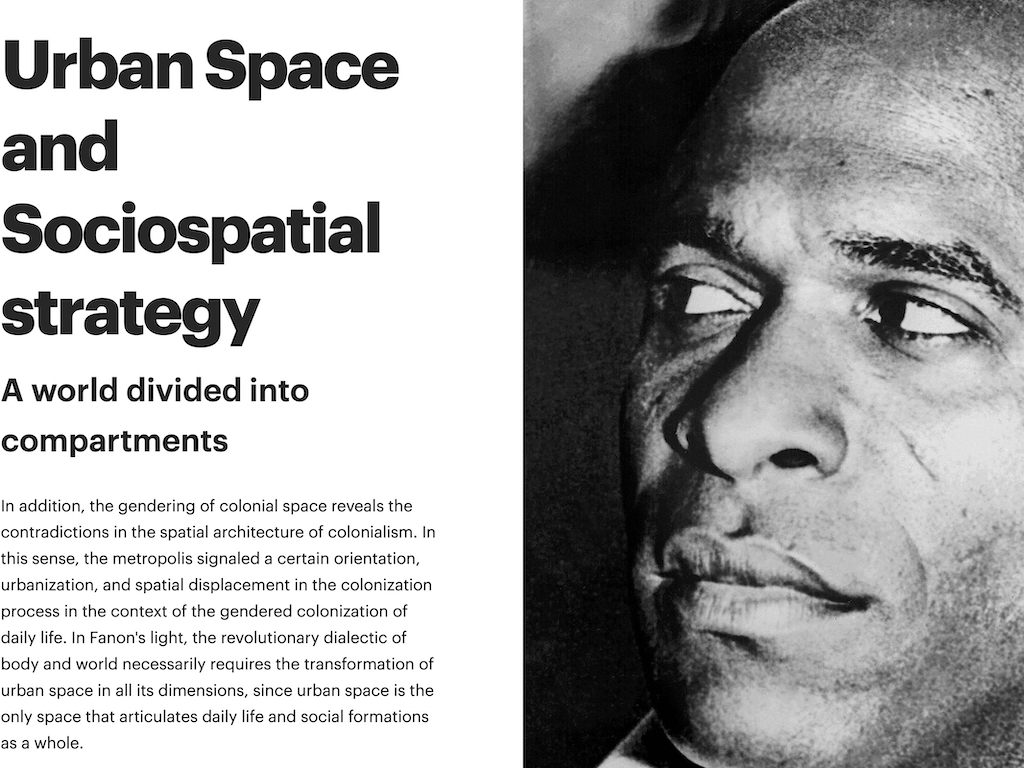
FANON TODAY
CRITICAL ESSAY
ETHNOGRAPHY IN THE COLONIAL ARCHIVES
The transformation of archival activity
The use of historical perspectives and archives is becoming increasingly important for anthropologists doing postcolonial studies. At this point, academics need to adopt the archive as a subject, not as a resource; that is, the archive is not only a !ield of information access but also a !ield of information production, state monuments, and state ethnography.
THe content of the archive, its form, and the systems of classi!ication and epistemology it signi!ies are a result of colonial policies and state power. In this sense, the archive is the most powerful weapon of the imperial state in the late nineteenth century; secrecy is a kind of coded repository of beliefs that persists between law and power.
In this sense, the colonial order associated with archive production is the main subject of this article, which focuses on archiving as a process rather than archiving things. The most fundamental criticism at this point is to view archives as epistemological experiments rather than as resources, and colonial archives are controversial.
MATERIALITY AND IMAGINARY
The colonial order of things
These studies come to a common point and ask a similar historical question about knowledge and power: Which political forces, social structures, and moral data produce qualitative knowledge while destroying other knowledge? The archive can only be thought of as a set of discursive rules, a utopian project, a document repository, or a set of expressions, but the most important thing is to know that colonial archives are institutions that hide, reveal, and reproduce the power of the state. Colonial documents are also an emotional economy that reveals what is imagined, feared, seen, or heard.
Understanding an archive requires understanding the institutions it serves. At this point, cross-references, rewritten sections, and quotations tell us not only how decisions were made but also how colonial histories were written.
COLONIZER AND COLONIZED
Space in Fanon's work
This article reinterprets the spatial and urban dimensions of Frantz Fanon's work. Fanon's works contain strong spatial dimensions, but there is no consensus about the status of space in these texts.
Postcolonial theorists have interpreted the prevalence of spatial metaphors in Fanon's work as a sign of his discomfort with issues of dialectical thought and historical transformation. Moreover, other readers have detected a shift from spatial to temporal concerns in Fanon's work. According to the author, the spatial aspects of Fanon's works contradict neither philosophical representation nor temporal transformation.
Fanon thought of racism as an alienating spatial dimension, treated colonization as a spatial organization, and attributed decolonization in part to reinterpreting spatial relations in the colonial city. According to him, this could only be possible through the construction of socio-spatial alliances across the country. Fanon's historical- geographical perspective on racism, the colonial question, and national liberation is associated with an insight that mediates the colonial war of post-war French urbanization into the colonization of everyday life.
APART
Racism as spatial relations
The neo-imperial world insists on controlling urban space, and it is a necessity to re!lect Fanon's micro- and macro- urban dimensions and understanding of colonization to the present day, which should be read on an urban and spatial scale. Fanon's perspective on racism, colonial issues, and national liberation is at the same time geographical as well as historical. Generally, this spatial dimension and movement are in the direction of moving away from the historicism of dialectical thought. In this sense, from an epistemological perspective, Fanon is an important source for geographers and urban theorists who think that spatial, cultural, and linguistic transformations in social theory occur simultaneously.
Many postcolonial commentators and readers point to the sharp character of Fanon's spatial narratives regarding the distinction between colonizer and colonized. Fanon describes this spatial organization as a type of compartmentalization. According to him, the colonial world is a world divided into sections. The existence of native quarters and European quarters, native-oriented schools, and European-oriented schools explains this; therefore, in the colonial city, spatial organization emerges as the absolute power of external imposition.
URBAN SPACE AND SOCIOSPATIAL STRATEGY
A world divided into compartments
In addition, the gendering of colonial space reveals the contradictions in the spatial architecture of colonialism. In this sense, the metropolis signaled a certain orientation, urbanization, and spatial displacement in the colonization process in the context of the gendered colonization of daily life. In Fanon's light, the revolutionary dialectic of body and world necessarily requires the transformation of urban space in all its dimensions, since urban space is the only space that articulates daily life and social formations as a whole.